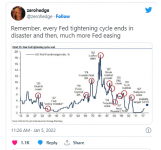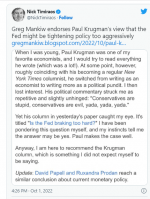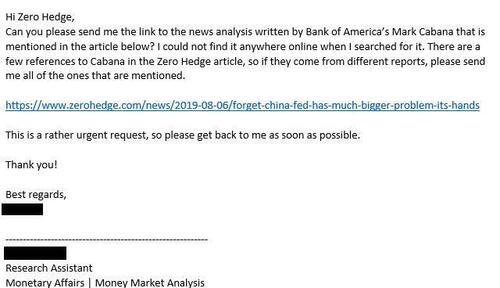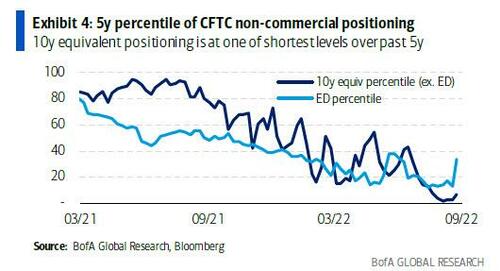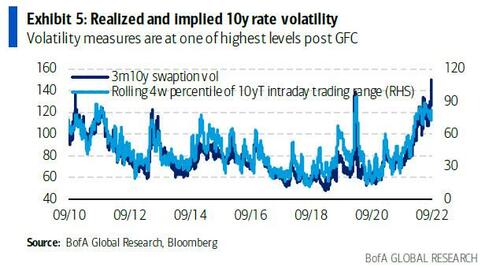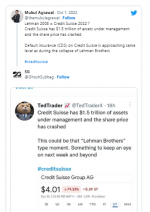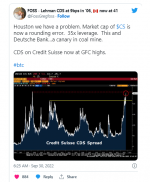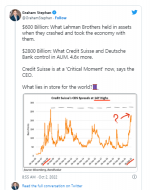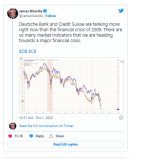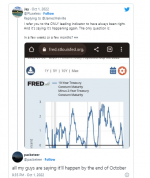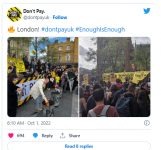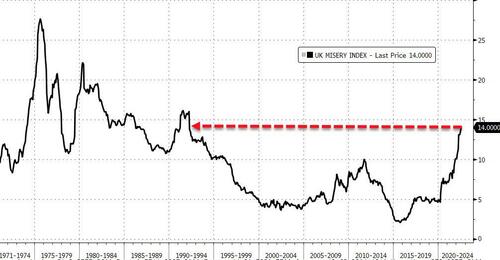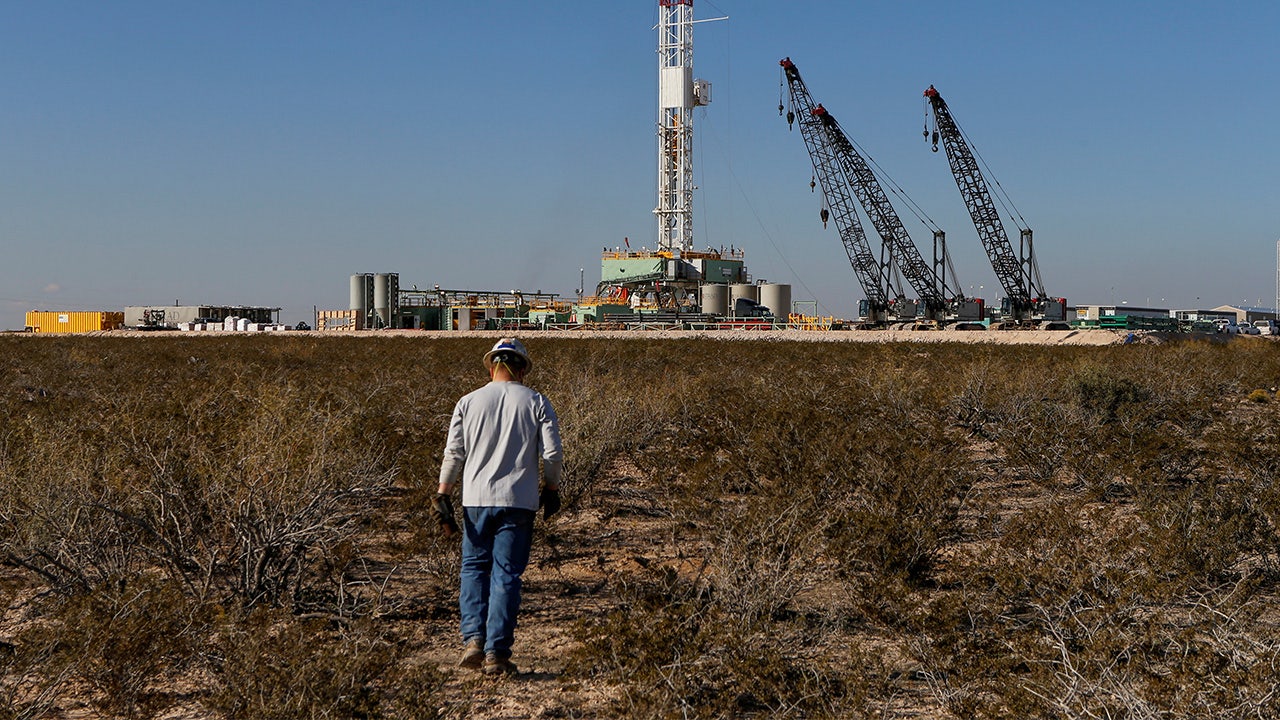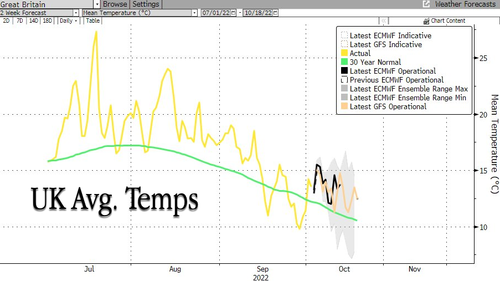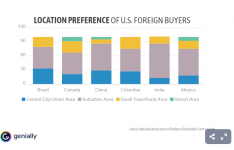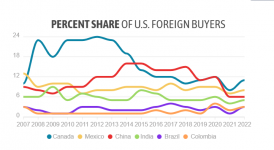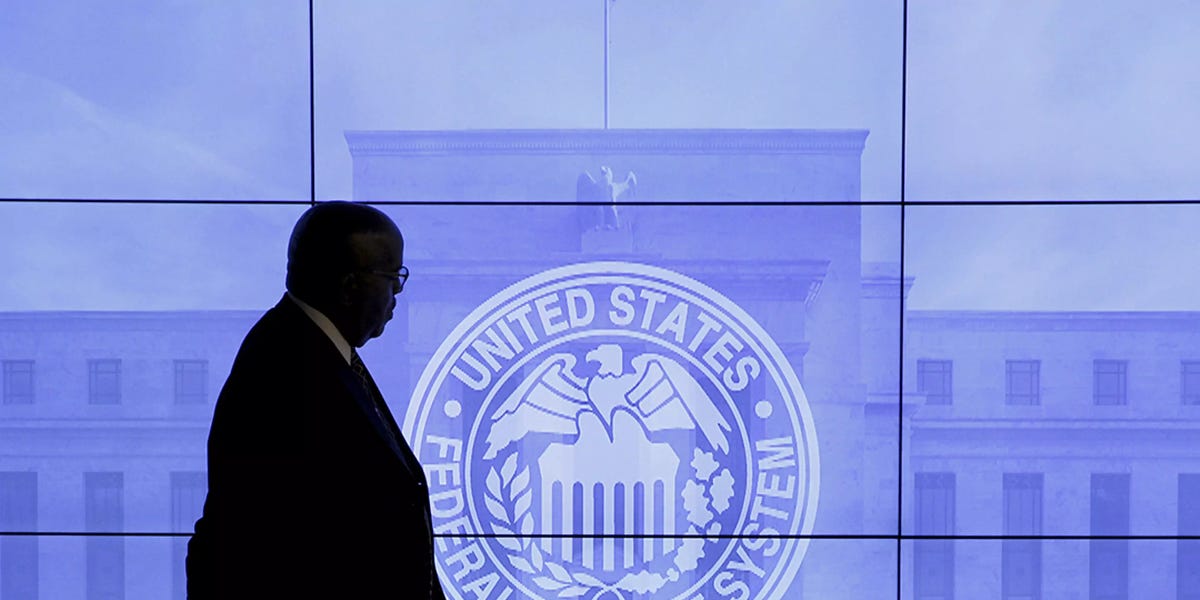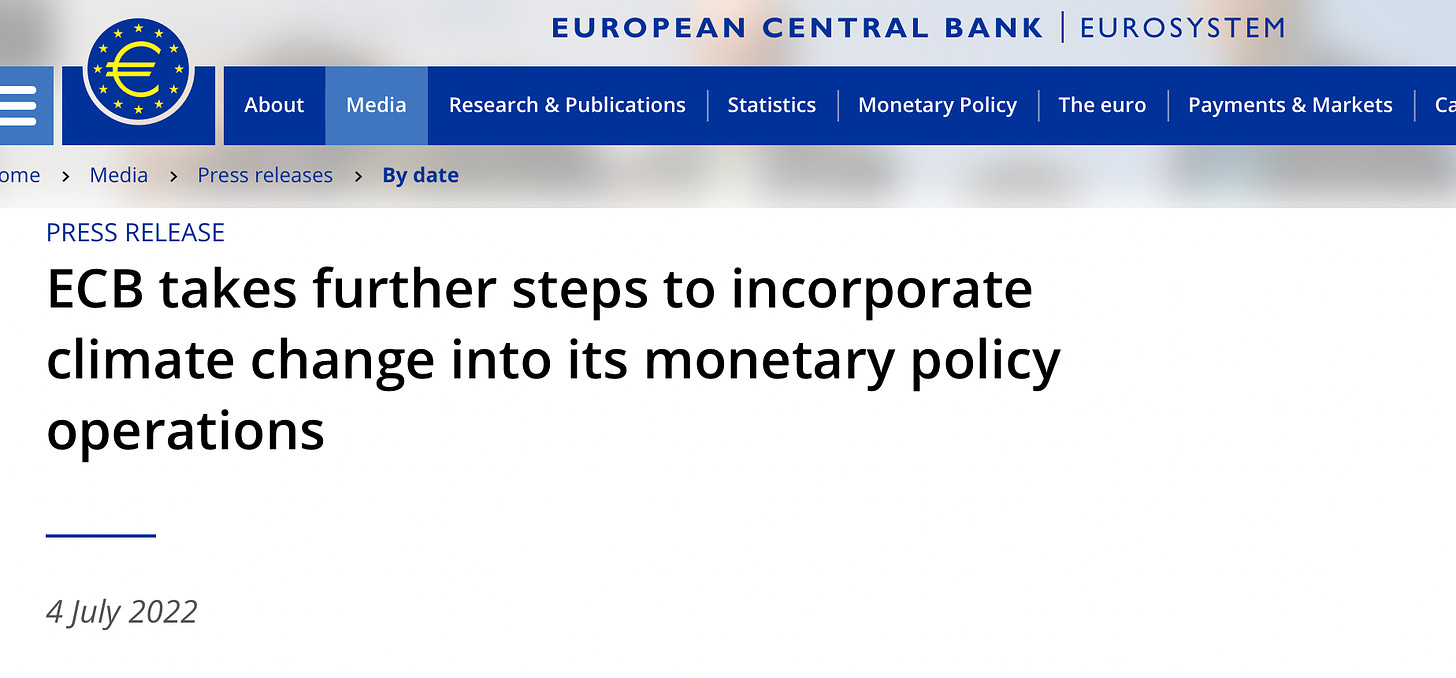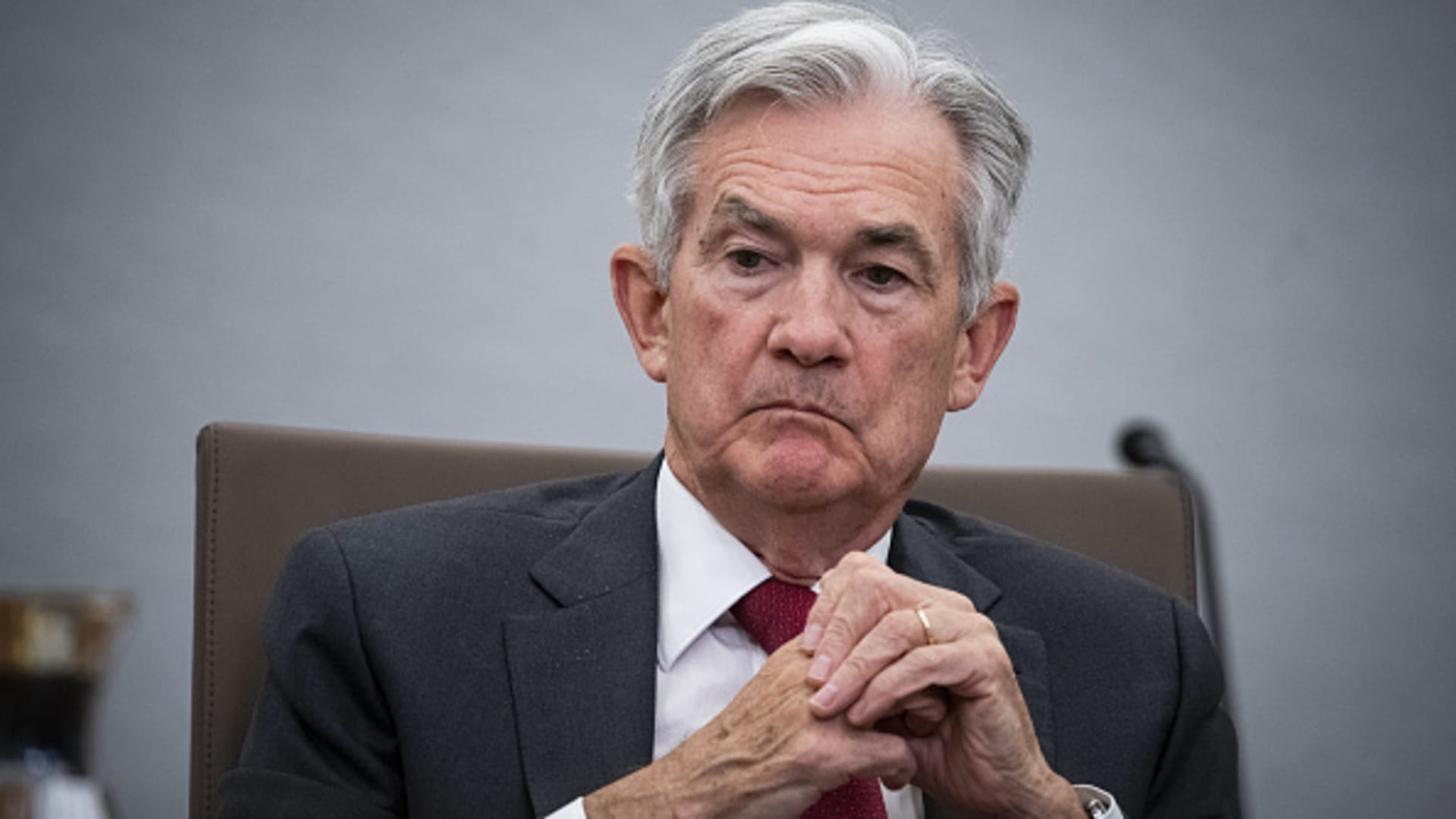Editor's Commentary: One of the toughest challenges we face in trying to get "normies" to appreciate and acknowledge the existential threat

noqreport.com
Synthetic Salvation — On Genomics, Mind Uploads, and the Quest for Immortality
Our elites want to live forever. The rest of us will make for rich compost.
by Joe Allen October 2, 2022 in Opinions
Transhumanism (2)
Editor’s Commentary: One of the toughest challenges we face in trying to get “normies” to appreciate and acknowledge the existential threat of the globalist elite cabal is they often cannot grasp the incentives behind pure evil. Too often we hear that greed or thirst for power are the only motivating factors that get rich and powerful people to try to be richer and more powerful. Because “normies” cannot see increased wealth or power in agendas that are attributed to globalist elites like Bill Gates or Klaus Schwab, they do not accept that they have incentives to depopulate most and subjugate the remnant.
The Subtack post below by Joe Allen is a bit different from what we normally post, but it’s an extremely important read because it helps us understand what drives many of those who are willing to step on a few serfs in order to achieve something bigger than money or power. For many of the elites, the belief that their lives can be extended and made infinitely better is enough incentive to do whatever it takes or harm whoever it takes to get there.
Of important note is that transhumanism is a tool through which the higher elites can control the lower elites. Those who are “in the know” regarding the demonic nature of plans like The Great Reset can get buy-in from those who aren’t fully aware. I’m speculating when I give this example, but it is my belief that Amazon founder Jeff Bezos, one of the richest men in the world, is NOT privy to the ultimate calculations in the agenda but is being herded along with other globalist elites to do the bidding of those “in the know” like Klaus Schwab and Barack Obama. Those at the top of the food chain of evil know they serve Satan whereas people like Bezos are driven by the desire to live forever. That doesn’t make him any less dangerous. It just means he’s a useful idiot instead of a direct minion of the Adversary.
Again, that’s speculation. Maybe Bezos is fully aware of the plan. Perhaps he answers directly to the Powers and Principalities. I don’t think so, but we may never know who’s really aware and who’s being used for their money and power.
If we can gain and disseminate an appropriate understanding of the unhinging effects transhumanism can have on powerful people, we will be better prepared to recognize when subtle components of their evil plans are launched. That’s why this article is so important. Call it a crash course in transhumanist motivations. Besides, it’s well-written and would be enjoyable if it were fiction. Unfortunately, it’s very real. Here’s Joe Allen…
Fear of death is intrinsic to human life. As our years accumulate, we watch friends and family drop off, one by one, disappearing from our presence and lingering only in memories.
Barring some miracle, divine or otherwise, we’re all soon to follow, down to the sweetest baby ever born.
Unfazed by this horror, the faithful are emboldened by belief in resurrection or reincarnation—a direct participation in the eternal. For religious people, the body is just a vehicle for a transcendent soul. The mystery of death is a rite of passage.
For the materialist, there is only this world, beyond which the dying meet total annihilation. The brain dissolves into black nothingness. Consciousness stops with the Big Zero at the end of our lives. And for all sentient beings, and all memory of our existence, there awaits the Big Zero at the end of the universe.
The cosmos is nothing but atoms and the void. To make matters worse, the atoms are slowly freezing to death.
Wallowing in this trance of sorrow, our elites, and most anybody else, would pay anything to live forever—or just a little longer. Held in thrall by old age, disease, and death, they put faith in biomedical protection racketeers who swear they can keep the Reaper at bay.
Today, it’s the vaxx-addicts and maskholes.
Tomorrow, it’ll be needle-pocked mutants with blinking devices stuck all over them, who pray to AI for a place in the cloud.
Transhumanism offers synthetic salvation through three basic methods—bio longevity, bionic continuity, and digital immortality.
Genomics will stop aging on the cellular level. Bionics will keep the body running with replacement parts. Once artificial intelligence is sufficiently advanced, mind uploads will allow eternal communion with the digital deities whom techies are busy creating.
“I think that there’s a good probability,” the human-reptile hybrid, Jared Kushner, recently said, “that my generation is—hopefully with the advances in science—either the first generation to live forever, or the last generation that’s gonna die.”
A more likely scenario? This is the first generation to merge with machines, and the last generation to regret it.
Kushner is not alone. Many of our credulous elites, from Wall Street to the World Economic Forum, have been ensnared by a techno-religion. Its unfrocked priests are the scientists and futurists who push radical gene therapies, brain-computer interfaces, and various life-logging gadgets. As the actual technology becomes more and more sophisticated, you can be sure every atheist and his lapsed uncle will fall prey to this cosmic scam.
And for those who can’t afford it? Well, you know, there’s only so much room on the lifeboat.
Bio Longevity
In order to cheat death, at least for awhile, the first method is to preserve the body at the cellular level. One proposed line of attack is to correct defective genes and defuse the cell’s innate self-destruct programs. With the discovery of the CRISPR-Cas9 complex in 2012, geneticists now have the power to more easily knock out faulty genes, and even insert new, superior genetic codes.
Joe Biden’s recent executive order, the National Biotechnology and Biomanufacturing Initiative, has slated $2 billion for these “high-risk, high reward” projects to “write circuitry for cells and predictably program biology in the same way in which we write software and program computers.”
There are also less invasive procedures, to be used in conjunction with gene-editing, such as munching vitamins morning, noon, and night, or gaining self-knowledge through Internet of Bodies surveillance devices—wearable trackers which feed every biometric data point into an artificial intelligence system, putting flesh on the bones of your “digital twin.” In theory, the resulting simulation could be used as a reference for targeted gene-editing.
“By preventing 90 percent of medical problems,” Ray Kurzweil wrote in The Singularity is Near, “life expectancy grows to over five hundred years. At 99 percent, we’d be over one thousand years. We can expect that the full realization of the biotechnology and nanotechnology revolutions will enable us to eliminate virtually all medical causes of death.”
Inspired by this sort of statistical fantasy, Big Tech oligarchs are pouring billions into various life extension laboratories:
SENS Research Foundation – Co-founded by the transhumanist Aubrey de Grey in 2009, this organization seeks to halt and reverse aging. “No matter what caused a given unit of damage in the first place,” they assure us, “the same regenerative therapeutics can be used to repair it.”
Altos Labs – Founded by Jeff Bezos and the corporate transhumanist Yuri Milner in 2021, this is a “new biotechnology company focused on cellular rejuvenation programming to restore cell health and resilience, with the goal of reversing disease to transform medicine.”
Calico Labs – Acquired by Google in 2015 at the behest of Larry Page and Sergey Brin, this company is focused on “the convergence of biology and technology, coupled with a long-term perspective and funding” with high hopes of “curing death.”
Methuselah Foundation – Bankrolled by Peter Thiel (along with many other immortality start-ups), this foundation is on a mission to “make 90 the new 50 by 2030.”
And the list goes on and on. By all appearances, billionaires fear death as if hell awaits, and they’ll pay any amount to avoid it. If you’re lucky, you too might add a few years to your life through trickle-down immortality.
Should these gene-therapies and 3D-printed organs fail to keep your carcass shambling along, there are always cryonic doctors who’ll freeze you right before you die, then thaw you out once these transhumanists finally get their shit together.
Alcor Life Extension Foundation, for example, charges $80,000 to freeze your head, and $200,000 for the full body treatment. It’s a small price to pay for a shot at immortality.
Bionic Continuity
The second method is to replace failing tissues and organs with mechanical parts. We do this already with pacemakers, prosthetic limbs, cochlear implants, dental implants, deep brain stimulation devices, and flag-raising penile implants. In a real sense, the entire plastic surgery industry—from hair transplants to rubber duck lips to silicone boobs—is a means to stave off our inevitable dissolution, if only on a superficial level.
Transhumanists foresee a day, just over the horizon, when more advanced prosthetics will offer superior functionality—including brain function. We’ll have Swiss Army knives for fingers and versatile artificial genitals, sort of like today’s transgenders, but presumably way better. Any prospective immortal had better hope so.
This cyborg dream was fleshed out in the early 20th century by the Marxist thinker J.D. Bernal. “Already we know the essential electrical nature of nerve impulses,” he wrote in 1929, “it is a matter of delicate surgery to attach nerves permanently to apparatus which will either send messages to the nerves or receive them. And the brain thus connected up continues an existence, purely mental and with very different delights from those of the body, but now perhaps preferable to complete extinction.”
Bernal compared this bionic transformation to the metamorphosis of a butterfly, albeit one with hideous wings. “Apart from such mental development as his increased faculties will demand from him,” he speculated, “he will be physically plastic in a way quite transcending the capacities of untransformed humanity.”
As we hurtle toward this nightmare in the 21st century, futurists claim it’ll soon be possible to model the entire human brain—down to the last electrochemical thought pattern—using artificial intelligence. The transhumanist guru Ray Kurzweil predicts this will be accomplished by 2029. (It’s unclear if that will be early in the year, or just in time for Christmas.)
Following an AI-created digital template, doctors will replace our dying neurons with artificial neurons. Bit by bit, our meat brains will be transformed into a latticework of lightning fast transistors. It’s an upgraded mind-brain that could last forever—so be sure to get a warranty.
Would this mechanical monster still be you, though? The idea is that a pattern is a pattern, and the human “soul” is just a pattern of information. It doesn’t matter what the medium may be. Think of it this way—if you replaced every thread in a sweater, strand by strand, with artificial wool, it would still feel like the same old sweater. Maybe even better.
In a similar manner, many believe your personal consciousness will survive the transition from gray matter to circuitry. This mind-machine merger would be like looking out at the world through your smartphone—forever. You’d hardly notice the difference.
“If you think about replacing the neurons one at a time by prosthetic neurons made of silicon,” explains the philosopher of consciousness and NYU-employed transhumanist, David Chalmers:
Just say I replace ten percent of my brain with silicon chips…do it one at a time, and keep going and keep going…and they interconnect with the other ones in a perfect way. … I think as long as you do it gradually, and replace the neurons one by one, then it’s gonna be like getting prosthetic limbs or [an] artificial heart.
You’re gonna be replacing parts of me, but I’m gonna be present throughout, and I think I could even stay conscious.
Of course, these artificial neurons haven’t been developed yet—not even close—but they will be one day. You’ll see. Have a little faith. Scientists are working hard. It’s a solid investment.
Digital Immortality
The third method to attain quasi-eternal life is basically the digital side of bionic continuity. Rather than, or in addition to, replacing neurons with artificial neurons, the mind will be gradually uploaded to a computer, where the patterns of one’s personality can be entombed in perpetuity.
Transhumanists delight in pointing out we’re already doing this. Everyone from toddlers to creaky old codgers is feeding their inner self into Google, Facebook, Amazon, Microsoft, Apple, third-party data vultures, and any intelligence agencies with backdoor access to these companies. Perhaps one day they’ll sell our digital twins back to us so we can inhabit our virtual wraiths.
“Currently, when our human hardware crashes,” Ray Kurzweil wrote, “the software of our lives—our personal ‘mind file’—dies with it. However, this will not continue to be the case when we have the means to store and restore the thousands of trillions of bytes of information represented in the pattern that we call our brains.”
Kurzweil believes injectable nanobots are the key to this uploading process. These microscopic robots will travel through the brain, mapping every neuron and synapse, creating a perfect facsimile of the “soul” in a computer. But there’s more than one way to skin a cat.
As with most transhumanists, Kurzweil was deeply influenced by the Carnegie Mellon roboticist Hans Moravec, who in 1988 described a gruesome uploading procedure now known as the “Moravec Transfer.” Basically, the patient commits suicide by having his or her brain scraped off, like whittling an onion, with each skin copied in silico:
You are fully conscious. The robot surgeon opens your brain case and places a hand on the brain’s surface. This unusual hand bristles with microscopic machinery, and a cable connects it to the mobile computer at your side. …
The surgeon’s hand sinks a fraction of a millimeter deeper into your brain, instantly compensating its measurements and signals for the changed position. The process is repeated for the next layer, and soon a second simulation resides in the computer, communicating with the first and with the remaining original brain tissue.
Layer after layer the brain is simulated, then excavated. Eventually your skull is empty…your mind has been removed from the brain and transferred to a machine.
Some would call this biohorror, but transhumanists revere the “Moravec Transfer” as a pioneering vision of synthetic salvation.
One of Kurzweil’s distinguished disciples, the transgender tech innovator Martine Rothblatt, proposes a kinder, gentler man-machine merger by way of mind-cloning.
“This blessing of emotional and intellectual continuity or immortality,” she (he? whatever) wrote in Virtually Human, “is being made possible through the development of digital clones, or mindclones: software versions of our minds, software-based alter egos, doppelgängers, mental twins.”
In other words, with sufficiently detailed surveillance, our personal data can be processed through artificial intelligence to create a new, more durable “soul” in silico.
“When the body of a person with a mindclone dies,” Rothblatt goes on, “the mindclone will not feel that they have personally died, although the body will be missed in the same ways amputees miss their limbs but acclimate when given an artificial replacement. … The mindclone is to the consciousness and spirit as the prosthetic is to an arm that has lost its hand.”
Having been baptized in electromagnetic waves, you will become your digital ghost, floating forever among the AI angels.
The metaphysics of this process make no sense, but then, why should the transhuman techno-cult be any more realistic than traditional cults? Their delusions would be funny if they weren’t constantly intruding upon our lives through ubiquitous screens and surveillance devices, and blasted into our brains with wall-to-wall propaganda.
“If anything,” Rothblatt conceded in a TED interview, “I’m perhaps a bit of a communicator of activities that are being undertaken by the greatest companies in China, Japan, India, the U.S., Europe.”
You have to wonder if we’ll have social credit scores in heaven.
So You Want To Live Forever—Good Luck With That
Humanity is composed of three primary elements—the spiritual, the biological, and the technological. At best, we are eternal souls enshrined in bodies, with exceedingly powerful tools in our hands. At worst, we’re bumbling monkeys in the Machine.
As the materialist worldview erodes our spiritual consciousness, we’re left with nothing but mortal bodies. When God is dead, technology is exalted as the highest power, holding out the promise of free WiFi and synthetic salvation.
The delusion of physical immortality, whether bodily or digital—or both—is capturing our elites’ imaginations. It doesn’t take a mathematical genius to figure out that if they actually managed to live forever, and the planet has finite space and resources, some number of us will have to become compost for their biomechanical gardens.
Personally, I don’t mind the idea of being turned into mulch. That’s the fate of every man and woman ever born. What is eternal will endure.
My fear, writhing deep in my paranoid brain stem, is that our technocratic rulers, sweating over flawed calculations, are willing to huck us into the mulchers long before our time.
God will not be mocked. Nor will Mother Nature. I’m certain that, in the course of time, every billionaire cyborg and half-retarded upload will shuffle off this mortal coil. Unfortunately, I also suspect they’d happily push the rest of us offstage while they do their apocalyptic jig.



